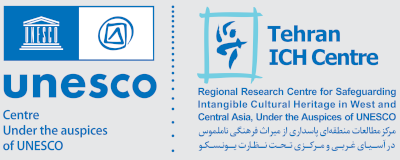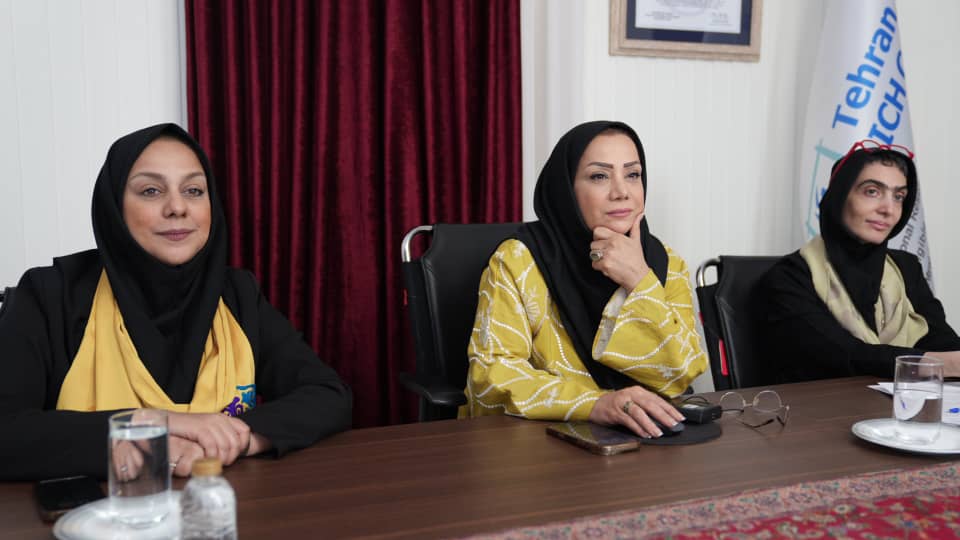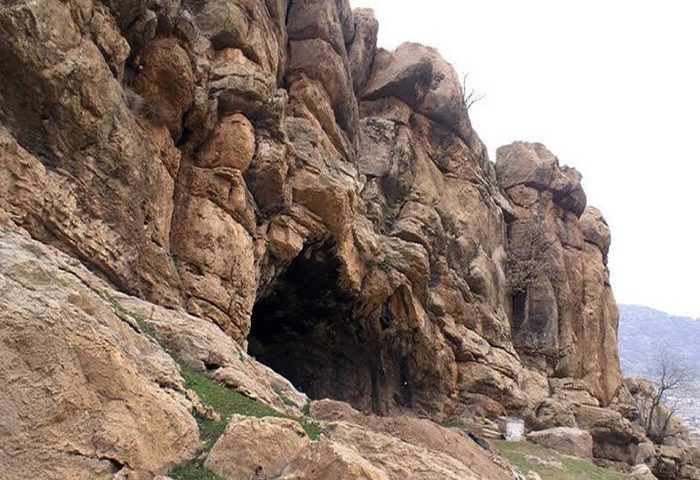On 17 May 2023, the Regional Research Centre for Safeguarding Intangible Cultural Heritage in West and Central Asia (under the auspices of UNESCO), Tehran ICH Centre for short, organised a meeting on “The Place of Cultural Diversity in the Islamic-Iranian Culture”, jointly with the Ministry of Culture and Islamic Guidance and the Ministry of Cultural Heritage, Tourism and Handicrafts. The meeting was held at Fajr Conference Hall in presence and hosted national experts and officials whose discussions revolved around: cultural diversity; preventing socio-cultural separation in Iran; the importance of preserving and promoting socio-cultural separation in Iran with a view to Islamic teachings.
Dr Seyyed Majid Emami, Secretary of the Iranian Cultural Council; Dr Maryam Jalali (Mrs), Deputy for Handicrafts and Traditional Arts of the Iranian Ministry of Cultural Heritage, Tourism and Handicrafts; Dr Atusa Momeni (Mrs); Acting Director of the Tehran ICH Centre; Dr Mahinnaz Mir Dehghan Farashah (Mrs), Associate Professor, Shahid Beheshti University; Dr Seyyed Mohammad Ali Ghamami, Head of the Department of Communication and Cultural Studies, Bagherol Olum University (topic of speech: The Islamic Theory of Interculural Communication); Hojatoleslam Habibolah Babaei, Faculty at University and Seminary (topic of speech: Spiritual/Ethical Order Dichotomy); Hojatoleslam Ali Asghar Eslami Tanha, Faculty at Bagherol Olum University (topic of speech: Cultural Diversity and Understanding).
To begin, Dr Seyyed Majid Emami, Secretary of the Iranian Cultural Council took the floor. He spoke about the importance of tangible and intangible cultural heritage in the national cultural policies of the Islamic Republic of Iran. By emphasising the need to revisit the national policy-making literature, he said: “we should not be afraid of the cultural and linguistic diversity of Iranian ethnic groups. These groups are Iranian and their languages and accents are also Iranian although we consider Farsi as the standard language of the nation, which is our wealth from the past to the present”. He referred to “policy-making based on cultural diversity” as one of the main missions of the Islamic Republic of Iran. To conclude, he introduced Iran as a country that has always preserved cultural diversity and emphasised the need to promote intercultural dialogue.
The second speaker of the session was Dr Maryam Jalali Dehkordi, Deputy for Cultural Heritage and Traditional Arts of the Ministry of Cultural Heritage, Tourism and Handicrafts. The speaker emphasised the place and role of the family, saying that “in Islam, family is not limited to man, woman and child, but it a vast concept that includes neighbours, colleagues, and friends. The Iranian cultural industry is fully family-based. The emphasis placed on the family in Islamic-Iranian teachings can be fully observed in the diverse manifestations of culture including music, gastronomy, architecture, and etc.
The speaker referred to cognition and understanding as the essence of cultural diversity. She compared tangible cultural heritage to a tree trunk and intangible cultural heritage to the roots of the tree, introducing “cultural diversity and handicrafts as fruits of the tree”. She concluded by saying that “cultural diversity needs to be taken account of as an important charter for Iran today and tomorrow”.
Third to speak was Dr Seyyed Mohammad Ali Ghamami, Head of the Department of Communication and Cultural Studies at Bagherol Olum University. His speech focused on the Islamic theory of intercultural communication, whereby he spoke about the concepts of “self” and “other” and discussed the concepts of “misery”, “human being” and “creation”, based on what he derived from Sa’adi’s poems. He added that the Qur’an in Surah Hojorat also refers to the notion of creation. “The terms “creation” and “human dignity” are two key concepts used in Surah Hojarat of the Holy Qur’an”, explained Mr Ghamami.
The fourth speaker of the session was Hojatoleslam Habibolah Babaei. He said: “It is necessary to differentiate between the ‘diversity of creation’ and ‘diversity of will powers’”. Religion helps cultures prosper. The interrelation of cultures is not something trivial, but a deeply-rooted phenomenon that leads to the formation of common worldviews, values and ethics, explained the speaker. Cultural diversity is a platform that may lead to various challenges but at the same time it is also useful for achieving social cohesion and is a driver of social cohesion. He concluded by saying that “within political and social order, what matters more than politics in establishing order is cultural order rather than politics itself. Cultural order facilitates the achievement of socio-political order in comparison to politics”.
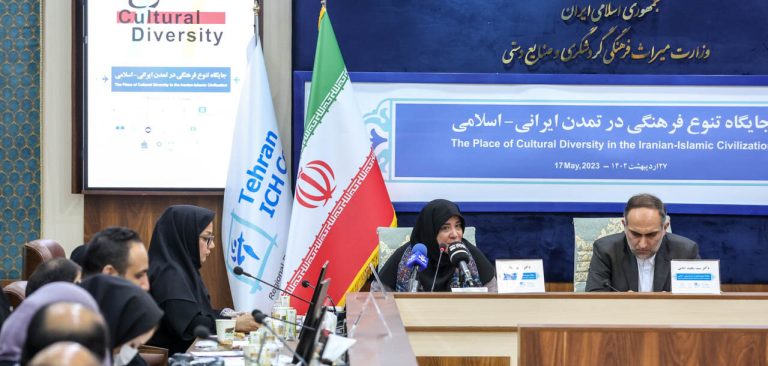


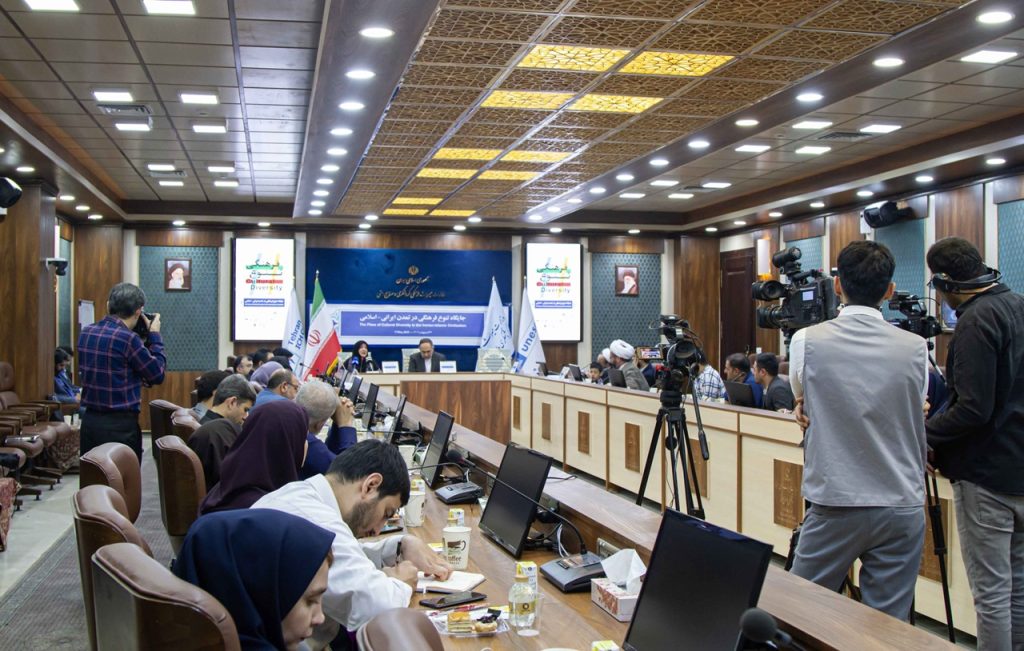
Hojatoleslam Ali Asghar Eslami Tanha, Faculty at Bagherol Olum University was fifth to take the floor. He emphasised the need to locate the source of cultural diversity, saying “the Qur’an uses the term “ekhtelaf”[۱] in various settings with different meanings. One of the meanings it conveys is “inconsistency” and “conflict” and of course the term “ekhtelaf” is also used to mean “differentiation” and “progression”. “In the absence of progression in day and night, we would not have had an environment so diverse”, said the speaker. “Diversity in languages and colours are all the result of God’s will. The Holy Qur’an also uses the two terms ‘inshi’ab’ and ‘Iqbal’, as two fundamental characteristics of the human nature. These two characteristics are the source of cultural diversity in human lives although people can either ‘accept’ or be ‘wary of” cultural diversity, where this acceptance is referred to as “Ta’arof” in the Qur’an and being wary of is “Tanakor”.
Dr Mahinnaz Mir Dehghan Farashah, Associate Professor at Shahid Beheshti University, was the sixth speaker. Following the speeches delivered by the previous speakers, Dr Mirdehghan introduced Iran as a multicultural country with a vast cultural diversity. She referred to the Iranian population as indigenous groups with great importance attached to them, saying that with proper planning we can achieve sustainable development. The speaker referred to collective memory and modes of communication in a society (including music, rites and traditions, and documented literature) as culture that together create cohesion.
The last speaker of the session was Dr Atusa Momeni, Acting Director of the Regional Research Centre for Safeguarding Intangible Cultural Heritage in West and Central Asia (Tehran ICH Centre). She said, “today, cultural diversity is a golden chain in achieving unity and cohesion. It is in fact the path by which nations can establish sustainable peace”. She added, “by not relying on this unity-building capacity, we are in fact depriving ourselves of a unique potential. In view of the exemplary experiences of the Islamic Republic of Iran, where even the Islamic Parliament itself showcases cultural diversity through the diversity it displays in the ethnicity and faiths of its members, we see how cultural diversity is a major principle of the Iranian culture and understand the obligation to preserve and promote it”. Further in her speech, Dr Momeni explained how the world has stopped the competition for first place in economics and politics and is now striving for identifying by culture and identities. “Even countries with less experience in this area are trying to open up and welcome diverse cultures in an attempt to strengthen their own cultural identity by recognising and accepting diverse cultures”, said the speaker.
A conclusion of the highlights of the speeches and a vote of thanks to the participants wrapped up this session.
[۱] In Farsi/Persian, the term “ekhtelaf” means “difference”, which refers to “diversity”.
